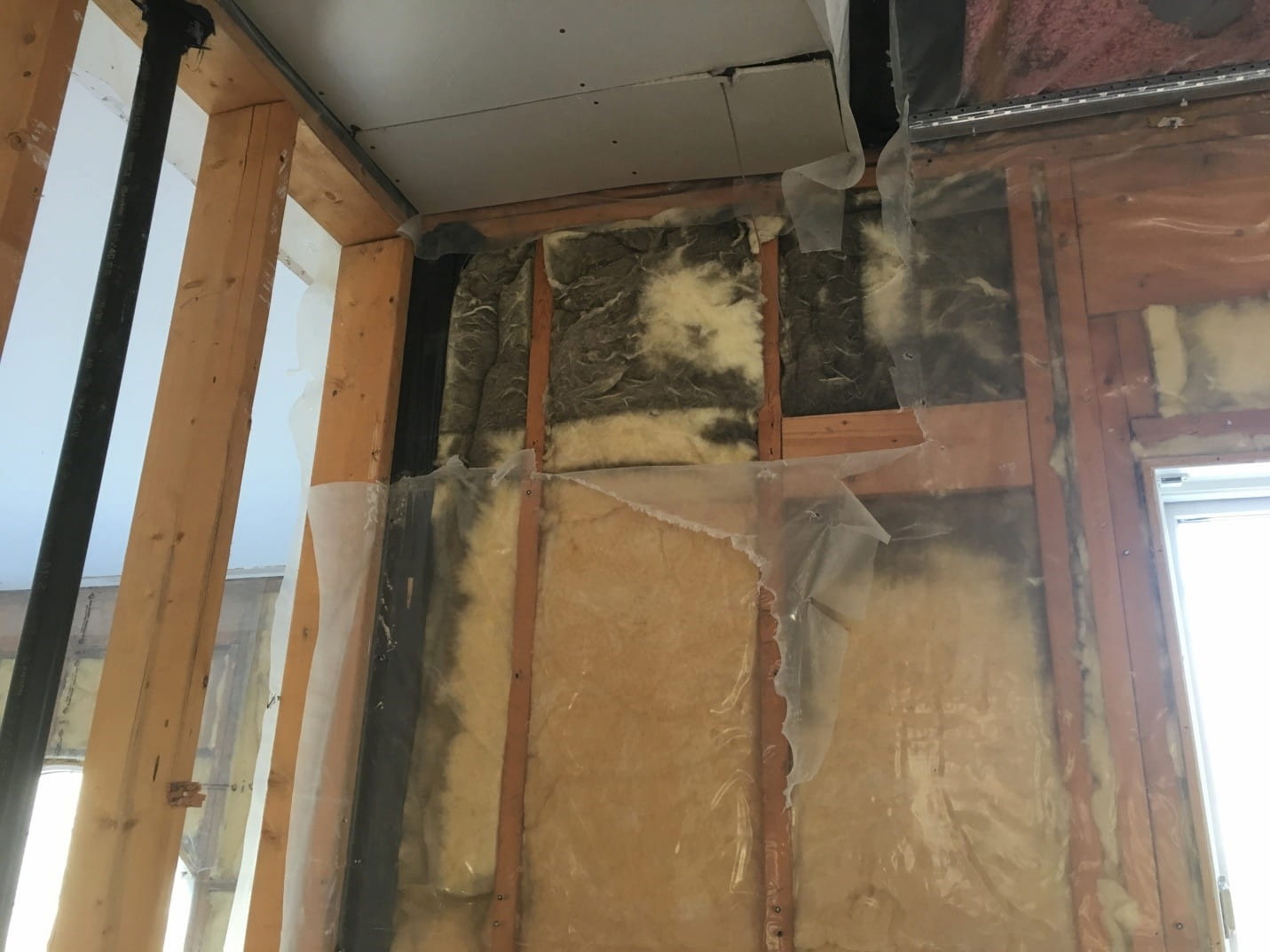Here at RS Homes, we custom design and build new homes. However, from time to time, we are asked to tackle renovations that pose a greater challenge for others.
Given the general excitement of home renovation, the possibility of delays is often overlooked. Delays, however, can occur for a number of reasons including: weather, a breakdown in the supply chain, the discovery of bedrock that is difficult to excavate or the presence of mould.
Mould and Your Health
Mould comes in thousands of different strains, but only a few, including the notorious Stachybotrys chartarum, aka black mould, produce toxins. Many homeowners would automatically shudder at its discovery in their home, yet have a limited understanding of what it is, the ways in which it can affect one’s health and the safest ways to remove it.
Mould is a fungi growth that may cause a variety of health effects, or none at all. Certainly, it is most pronounced in individuals already sensitive to allergens in particular. For these individuals, moulds can cause nasal congestion, throat irritation, coughing or wheezing, eye irritation or skin irritation. Each of these symptoms may present alone or in combination. In addition, immune-compromised individuals are at greater risk for serious infections when exposed to mould.
Mould and Your Home
When it comes to mould, prevention is better than chasing solutions. Even if only a small area of mould is visible, this could be a sign of a much bigger issue that is unseen. A number of steps can be taken to minimize your exposure to mould in the home. It is important to identify problem areas in your home and to correct them as quickly as possible. Although you cannot mould-proof your home, you can make it mould-resistant, keeping in mind that mould cannot grow without moisture.
You Can Control Mould
Here are some easy steps every homeowner can take to make their home more mould-resistant:
- Dry wet areas immediately.
- Prevent moisture buildup with proper ventilation.
- Equip your home with mould-resistant products such as mould-resistant drywall, caulking and paint.
- Monitor indoor humidity levels. A 30 to 50% humidity level is recommended for most of the year in Canada.
- Clean or repair roof gutters. A mould problem might be a simple matter of a roof that is leaking because of full or damaged gutters.
- Improve airflow in your home. Open doors between rooms, move furniture away from walls, and open doors to closets that may be colder than the rooms they’re in. Let fresh air in to reduce moisture and keep mould at bay.
Where visible signs of mould are present, a moisture meter can help detect moisture within property walls and flooring and can indicate areas where mould buildup may be present. Air quality testing and subsequent scrubbing using a HEPA filter to catch mould spores is a prudent course of action in remedial work.
Safe Mould Removal
Any visible mould can be removed using a mixture of bleach and water. However, because of its high toxicity level, its removal is best handled by a professional. To be safely removed, one would wear a respirator or a facemask rated for black mould spore protection, and cover arms, legs and hands to avoid contact with mould spores.
Mould in the News
There have been relatively few claims resulting from ill effects from the presence of moulds as causation is difficult to prove. The press, however, has given a high profile in some cases that involve government buildings in Ontario and British Columbia.In late 2002, the Canadian Construction Association formed a toxic mould task force to develop standards, means of assessment, remediation protocols and other guidelines for construction contractors.
For further information on ways to safeguard yourself during a home renovation or for information on luxury custom home construction, please visit us at RS Homes.

